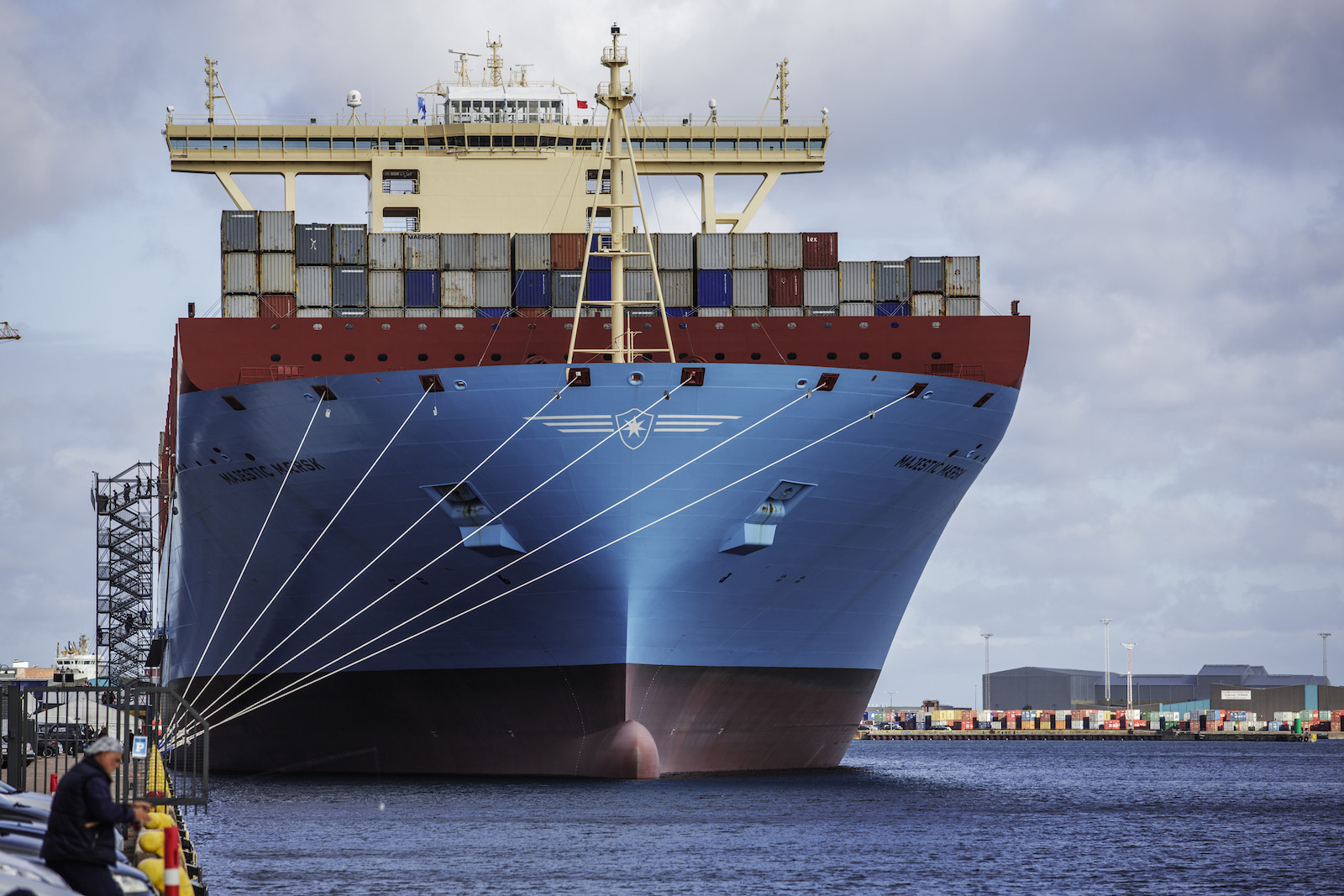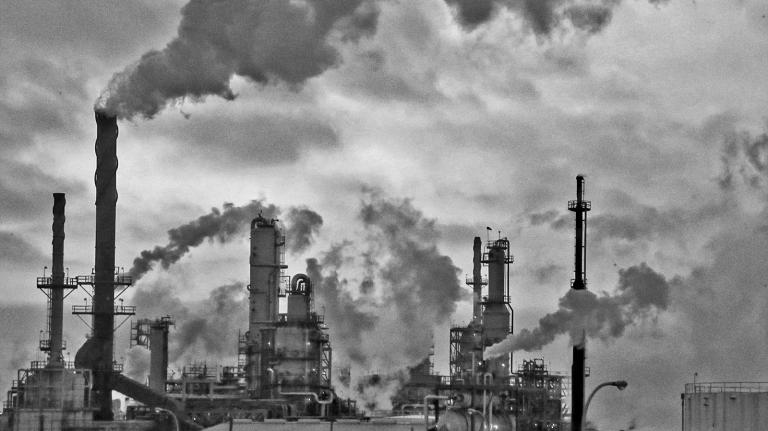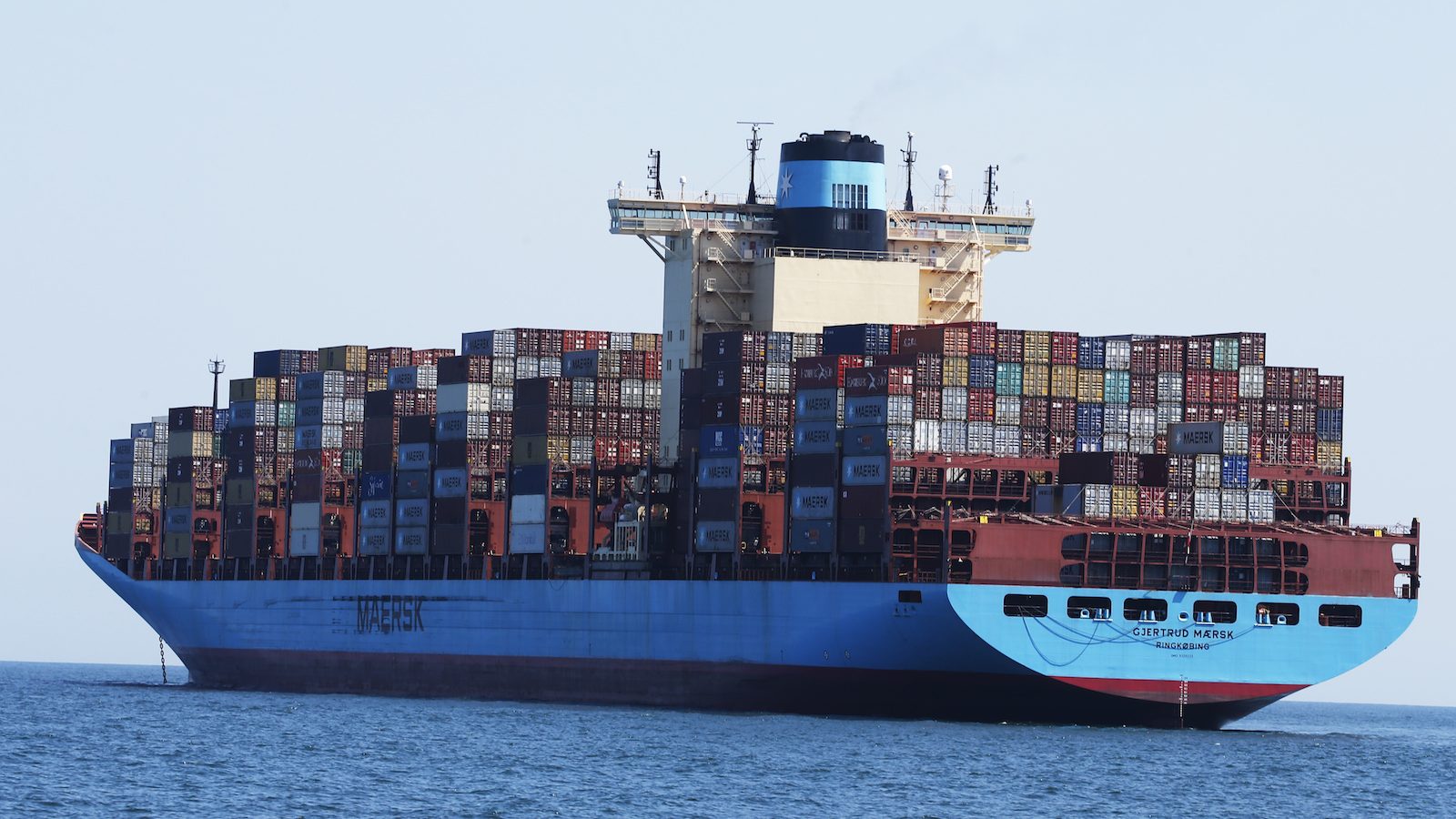When shipping giant Maersk announced last month it would operate a “carbon-neutral” vessel by 2023, the Danish company committed to using a fuel that’s made from renewable sources, is free of soot-forming pollutants — and is currently in scarce supply.
“Green methanol” is drawing interest from the global shipping industry as companies work to reduce greenhouse gas emissions and curb air pollution in ports. The colorless liquid can be used as a “drop-in” replacement for oil-based fuels with relatively minor modifications to a ship’s engine and fuel system. It’s also easy to store on board and, unlike batteries or tanks of hydrogen, it doesn’t take away too much space from the cargo hold.
[Read more: In Costa Rica, a startup builds a model ship for a cleaner future]
Maersk’s plan to run its container ship on sustainably sourced methanol marks a key milestone for the emerging fuel. Cargo shipping is the linchpin of the global economy, with tens of thousands of vessels hauling goods, food, and raw materials across the water every day. The industry accounts for nearly 3 percent of annual global greenhouse gas emissions, a number that’s expected to rise if ships keep using the same dirty fuels, according to the International Maritime Organization, or IMO, the United Nations body that regulates the industry.
The IMO aims to reduce total shipping emissions by at least 50 percent from 2008 levels by 2050, and to completely decarbonize ships by the end of this century. The policy is accelerating efforts to test, pilot, and scale up more sustainable fuels.
“A lot of [cargo] carriers and technology providers are trying to figure out what the alternative to bunker fuel is,” said Dan Rutherford, who directs the marine and aviation programs at the International Council on Clean Transportation, or ICCT, in California.
Methanol, or CH₃OH, is primarily used to make chemicals for plastics, paints, and cosmetics. It’s also considered a top candidate for cleaning up cargo ships in the near term, along with liquefied natural gas — a fuel that produces little air pollution but ultimately results in higher emissions of methane, a potent greenhouse gas. Long term, however, the leading contenders are likely to be ammonia and hydrogen, two zero-carbon fuels in earlier stages of development.
At the moment, about a dozen chemical tankers burn methanol in their engines, with others soon to launch. But those vessels use conventional methanol, which is made from coal or natural gas. Maersk’s new container ship would be the first commercial vessel to run on green methanol specifically, said Kjeld Aabo, director of new technologies for MAN Energy Solutions, the manufacturer providing the engine. The biggest challenge, Maersk said, will be finding enough of the fuel to run its ship as planned.

One of the world’s largest container ships, the Majestic Maersk, at the quay of Langelinie in Copenhagen. AP Photo / POLFOTO, Rasmus Flindt Pedersen
The green version of methanol comes in two varieties: bio-methanol or e-methanol.
Bio-methanol can be made from biomass, such as crop waste and paper pulp, or it can come from biogases gathered at landfills and sewage plants. The organic material is fermented or subjected to high temperatures to produce synthetic gas, which is then processed in a reactor. In Montreal, Canada, bio-ethanol made by the cleantech company Enerkem is already being used to make chemicals for polyester fabrics and drink bottles.
E-methanol is made by combining hydrogen with carbon dioxide. Ideally, the hydrogen involved is produced by using renewable electricity (thus the titular “E”) to split water molecules. The necessary carbon can be captured from the exhaust fumes of power plants or, increasingly, by sucking CO2 from the sky using direct air capture. A green methanol facility in Iceland sources its carbon from a nearby geothermal power plant; the product is subsequently blended with gasoline and used to reduce conventional cars’ tailpipe pollution.
The “well-to-wake” emissions footprint of e-methanol can be “very close to zero” if no fossil fuels are involved in the process, Rutherford said. His ICCT colleagues also analyzed bio-methanol from plant biomass; that fuel’s overall emissions were 70 to 80 percent lower than those of marine gas oil, a petroleum product commonly used in ships.
But making green methanol is extremely costly, and its overall production amounts to a trickle: about 220,000 metric tons every year, according to the Methanol Institute and the International Renewable Energy Agency. Even if that entire amount was used for shipping, it’d amount to less than 1 percent of the industry’s annual fuel consumption.
Conventional methanol, by contrast, is widely available and relatively less expensive to make using fossil fuels. Global production nearly doubled over the last decade to more than 100 million metric tons annually, driven by Chinese manufacturers. Like its cleaner counterpart, fossil methanol doesn’t produce harmful soot or particulate matter when burned. Yet it’s not exactly a climate win. Methanol from natural gas actually increased well-to-wake emissions by up to 15 percent when compared to existing marine fuels, a 2018 study found.
“As in all things fuels, the good stuff is not the cheap stuff,” Rutherford said. “And the cheap stuff tends to be comparable in greenhouse gas emissions to heavy fuel oil today.”
For green methanol supplies to scale, a few key things need to happen, experts say. Regulators will need to set a price on carbon dioxide emissions or take similar measures to incentivize (or force) companies to buy cleaner fuels. Renewable electricity projects must continue to multiply, while carbon-capturing technologies will need to significantly scale to reduce their own costs. And, although methanol is similar to oil-based fuels, it’s chemically different enough that the shipping industry will need to build specific fueling infrastructure for methanol in ports around the world.
But, despite the challenges, shipping giants are installing methanol engines now to stay ahead of the curve, said Aabo of MAN Energy Solutions. Cargo ships are meant to last for roughly 20 years or longer, and climate regulations and fuel markets can both change dramatically in that amount of time. Companies can start with fossil methanol then switch to green as supplies become available. Or, since the same engines can also burn diesel fuel, companies might start with petroleum, then switch to methanol later on. If Maersk is unable to get enough sustainable fuel by 2023, its new ship has this fallback option — though using it would void the vessel’s “carbon-neutral” credentials.
Ship operators “have to be ready in some way,” Aabo said. “When looking at new projects, they are looking not only for tomorrow; they are looking for the future.”




